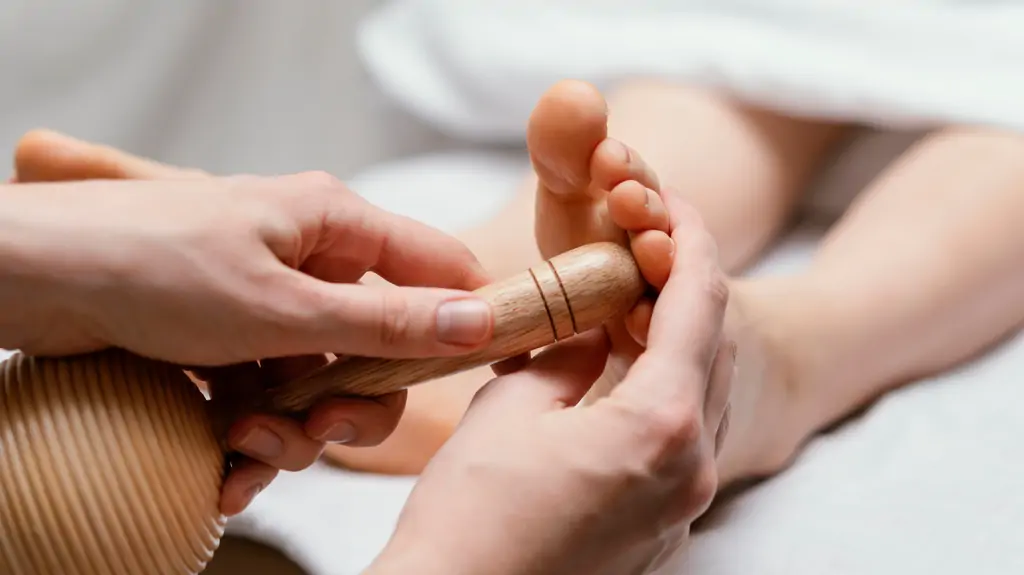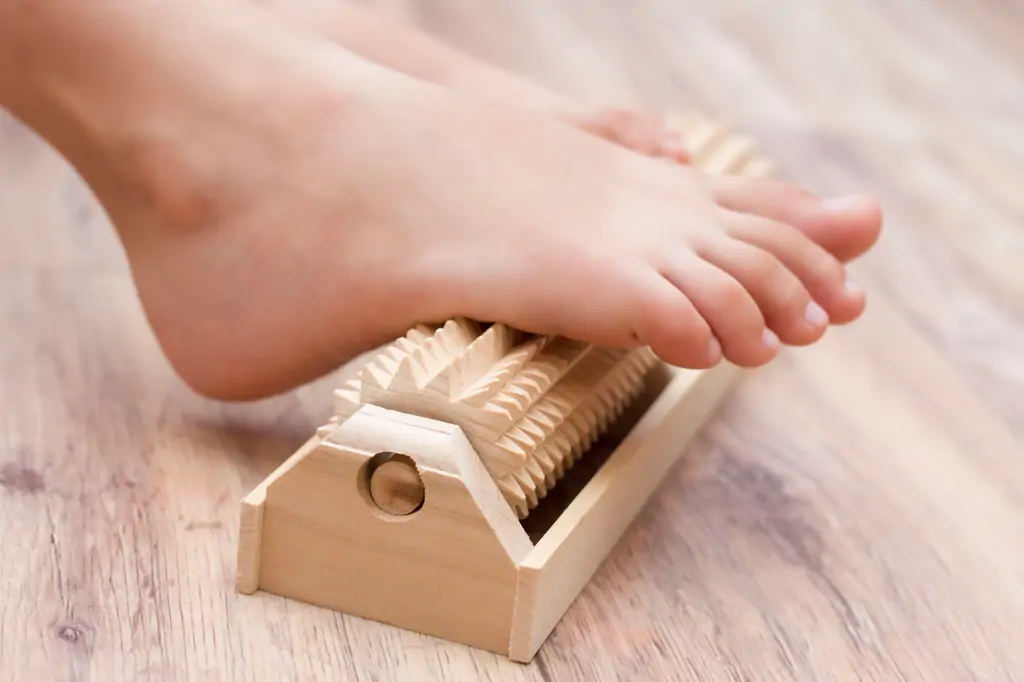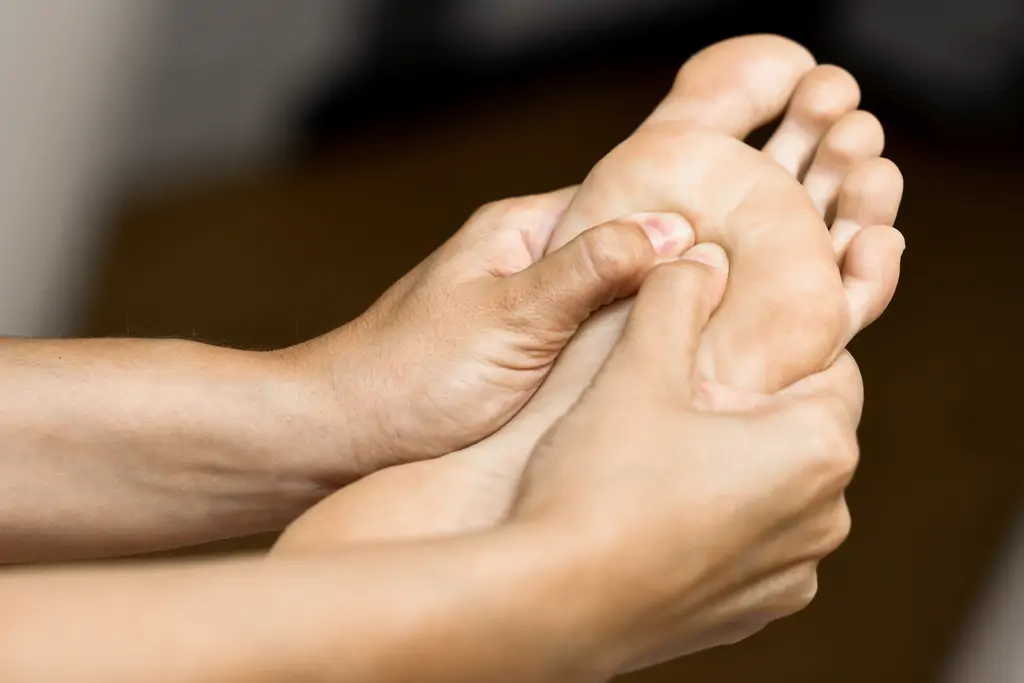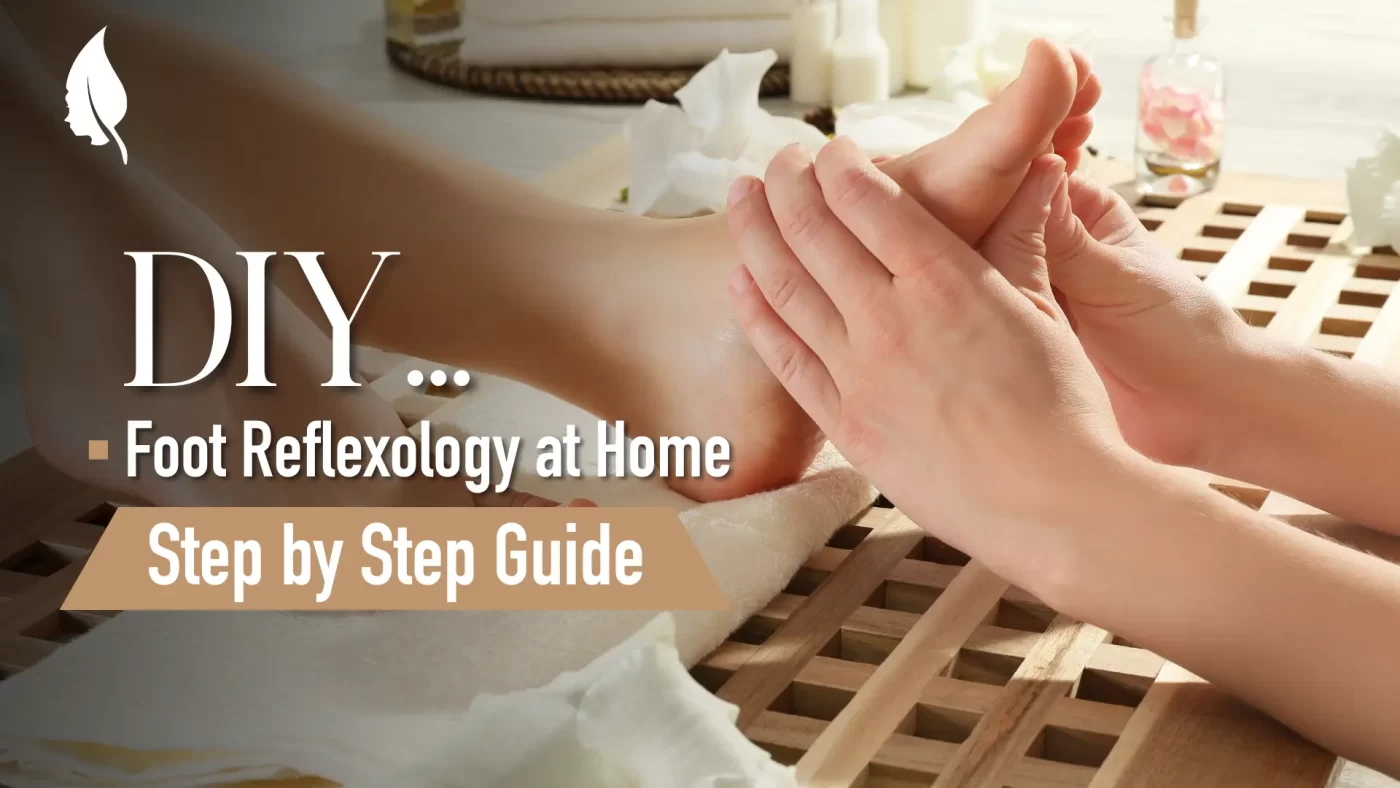Table of Contents
Foot reflexology is a simple yet powerful self-care technique that helps relieve stress, improve circulation, and restore balance to your body—all through gentle pressure on specific points of your feet. The best part? You can do it yourself right at home!
In this guide, we’ll walk you through how to perform DIY foot reflexology step-by-step, even if you’re a complete beginner.

What Is Foot Reflexology?
Foot reflexology is a natural healing practice based on the idea that certain points on the feet correspond to different organs and systems in the body.
By stimulating these points with your fingers or a reflexology stick, you help release tension, boost energy flow, and support your overall well-being.
Think of your feet as a map of your body — each zone is linked to an internal organ. For instance:
- Toes represent the head and neck
- The ball of the foot connects to the heart and chest
- The arch relates to the digestive organs
- The heel corresponds to the lower back and intestines
Benefits of Foot Reflexology
Here’s why so many people are turning to foot reflexology as part of their relaxation routine:
| Benefit | How It Helps |
|---|---|
| Stress Relief | Calms the nervous system and promotes relaxation |
| Better Sleep | Helps reduce anxiety and restlessness before bed |
| Improved Circulation | Stimulates blood flow and oxygen delivery |
| Pain Relief | Reduces tension in muscles and joints |
| Boosts Immunity | Supports the body’s natural detox and healing processes |
What You’ll Need
Before starting your DIY foot reflexology session, prepare these simple items:
- A comfortable chair or yoga mat
- A clean towel
- Reflexology stick (optional)
- Natural massage oil or lotion
- Relaxing music or aromatherapy candles (optional for ambiance)

Step-by-Step Foot Reflexology Guide
Step 1: Relax and Warm Up Your Feet
Sit comfortably and start by soaking your feet in warm water for 5–10 minutes.
Then, dry your feet and gently rub them to improve circulation.
Step 2: Apply Massage Oil
Use a few drops of oil or lotion to reduce friction and make the massage smoother. Coconut oil, olive oil, or any essential oil blend works well.
Step 3: Start with General Pressure
Use your thumbs to press along the entire sole of your foot — from heel to toe — using gentle, circular motions.
Do this for about 2 minutes per foot to warm up the reflex zones.
Step 4: Focus on Key Reflex Points
Work on each zone depending on your needs:
- Toes: relieve headaches and eye strain
- Ball of Foot: reduce chest tightness and stress
- Arch: soothe stomach and digestion discomfort
- Heel: release lower back tension
Apply firm but comfortable pressure on each area for about 30 seconds to 1 minute.
Step 5: Finish with Gentle Strokes
End your session by stroking from heel to toe several times to calm and balance your energy flow.

How Often Should You Do Foot Reflexology?
You can practice foot reflexology 2–3 times a week for general relaxation or even daily if you experience fatigue or stress.
Consistency helps your body respond better to the stimulation and enhances long-term benefits.
Pro Tips for Best Results
- Stay hydrated before and after the session.
- Focus on breathing deeply while massaging.
- If you feel soreness in certain areas, apply lighter pressure.
- Practice at night before bed for the most calming effect.
FAQs about DIY Foot Reflexology
Q1: Can I do foot reflexology every day?
Yes! Gentle daily sessions help reduce tension and maintain balance.
Q2: How long should each session last?
About 10–15 minutes per foot is ideal for full relaxation.
Q3: Do I need special tools?
No, your hands and thumbs are enough, but a reflexology stick can help target deeper points.
Q4: Is reflexology safe for everyone?
It’s generally safe, but if you’re pregnant or have diabetes, consult your doctor before trying it.
Q5: Can reflexology help with anxiety or stress?
Absolutely. Reflexology promotes deep relaxation and calms your mind naturally.
Final Thoughts
Foot reflexology isn’t just about foot massage—it’s a holistic wellness practice that connects body and mind.
With regular DIY sessions at home, you can reduce stress, boost circulation, and improve your overall mood effortlessly.
So next time you feel tired after a long day, take a few minutes, sit back, and give your feet the care they truly deserve.
Founder and driving force behind Web Evolve Co., Ltd., a full-service website development and digital solutions company trusted by leading businesses across Thailand. With over 5 years of experience in the digital industry, he specializes in designing and developing websites that excel in both UX/UI and SEO — empowering businesses to grow sustainably in the digital world.











